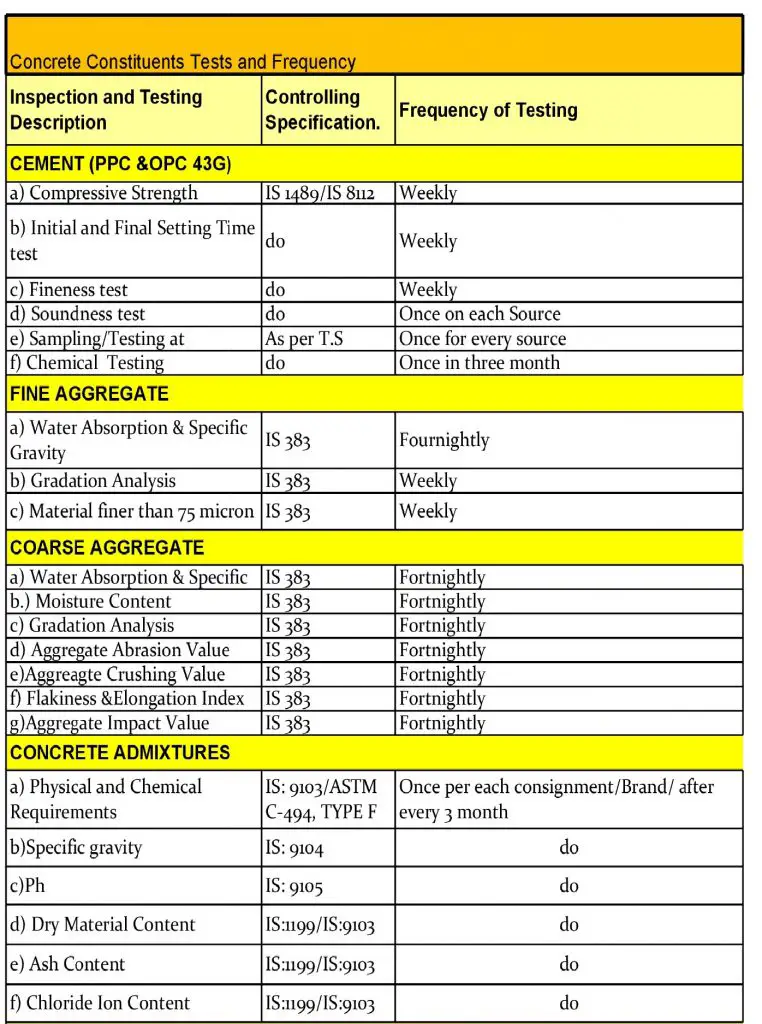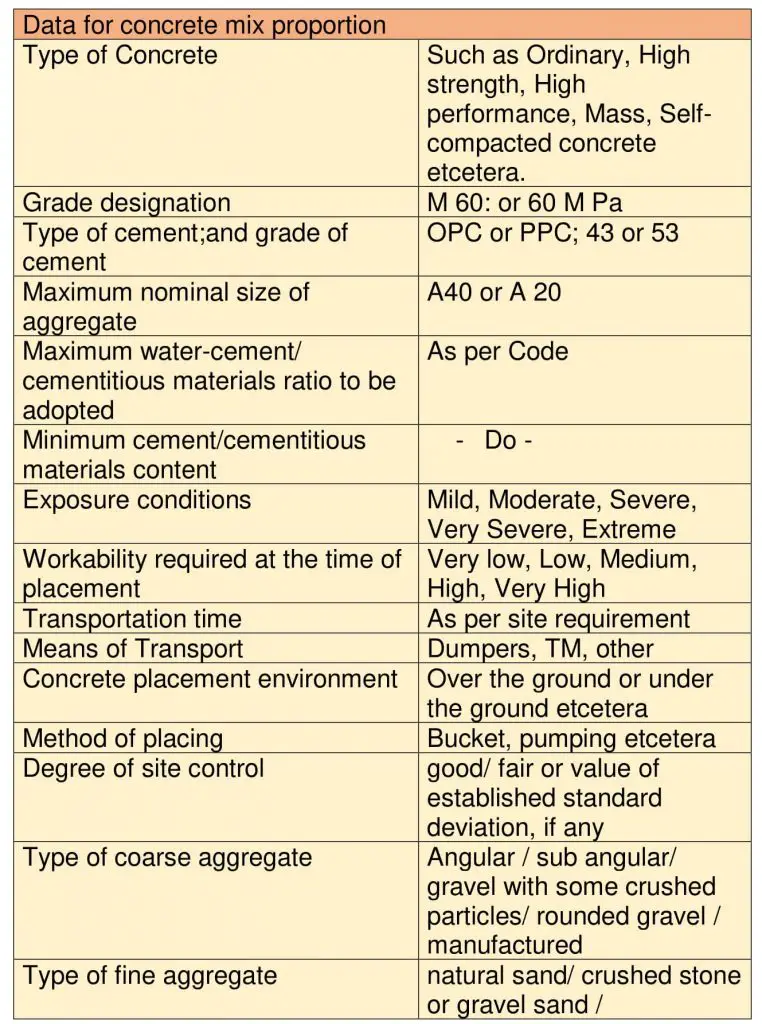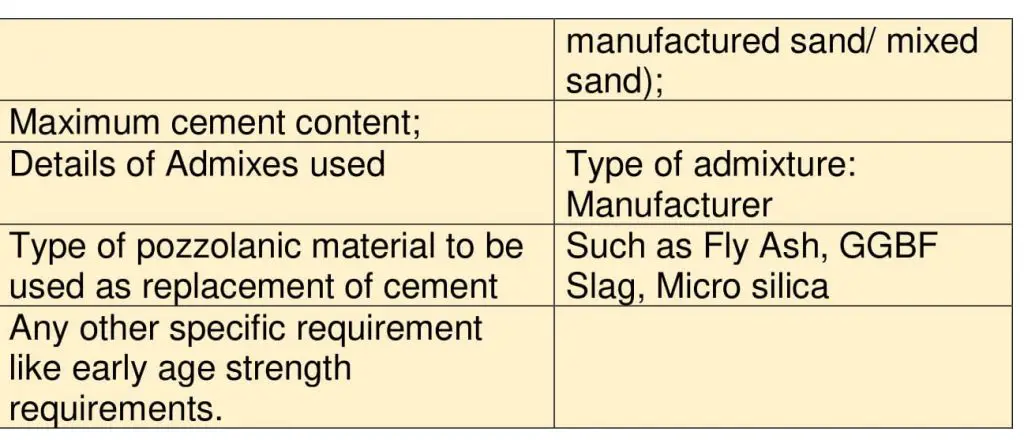
Proportioning of Design Mix Concrete
Contents:
Proportioning of Design Mix Concrete
Data for concrete mix proportioning
Proportioning of Design Mix Concrete
Maximum nominal size of aggregate is used in design mix concrete. It is different from maximum size of the aggregate.
Following sieves are used for aggregate sieve analysis
Coarse aggregates (mm) | Fine Aggregates (mm / µm) |
100 | 10 |
80 | 4.75 |
63 | 2.36 |
40 | 1.18 |
20 | 600µm |
16 | 300µm |
12.5 | 150µm |
10 | 75µm |
The smallest sieve opening through which the entire amount of aggregate is required to pass is called the maximum size of aggregate. (for 20 mm maximum size aggregate-all the material passes through next higher40 mm sieve)
The smallest sieve opening through which the entire amount of aggregate is almost passed (90%-100%) is called the nominal maximum size. (for 20 mm nominal maximum size aggregate-all the material (90%-100%) passes through 20 mm sieve)
There are four basic ingredients for concrete production requirement:
Cementing Material
Fine Aggregates – size less than 4.75 mm
Coarse Aggregates – Size greater than 4.75 mm
Water
Other ingredients that are added for Strength, Workability and Durability of concrete are listed below for different type of concretes
Fly Ash- Added in some quantity with cement replacement
Ground Granulated Blast furnace slag – Added in some quantity with cement replacement
Silica fumes – pozzolanic material used for high performance Concrete
Rice Husk Ash
Metakaolin (Metakaolin is the anhydrous calcined form of the clay mineral kaolinite. Minerals that are rich in kaolinite are known as china clay or kaolin, traditionally used in the manufacture of porcelain. The particle size of metakaolin is smaller than cement particles, but not as fine as silica fume – Source Wikipedia)
Super Plasticizer
Epoxy
All these ingredients are used for production of different type of concrete such as
Ultra-high-performance concrete
Self-consolidating concretes
Vacuum Concrete
Shotcrete
Pervious concrete
Nailing Concrete
High Strength Concrete
And other form of concrete as per design requirements
The proportioning uses the concept of on Abram’s Law (also called Abram’s water-cement ratio law) and Lyse’s Rule
ABRAM’S LAW – Source Wikipedia |
The law states the strength of a concrete mix is inversely related to the mass ratio of water to cement. As the water content increases, the strength of concrete decreases.Empirically;S = A / Bw/c{\displaystyle S={\frac {A}{B^{w/c}}}}whereS is the strength of concreteA and B are constantsw/c is the water – cement ratio, which varies from 0.3 to 1.20 |
LYSE’S LAW |
According to Lyse’s rule it is not possible to predict the slump as water content changes. The need for this assessment arises when appropriate corrections must be applied to the water content to obtain the same slump without effecting any change to Water /cement ratio. (Consistency of cement refers to amount of water as percentage of cement) |




